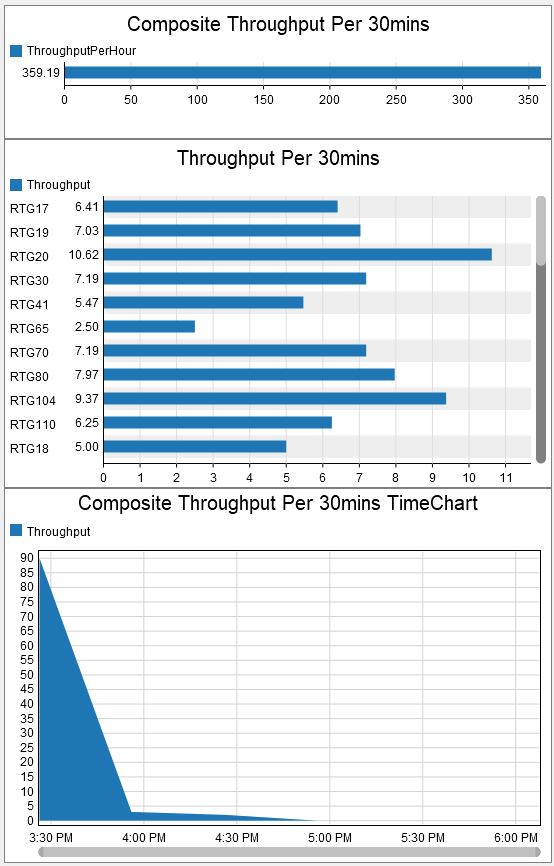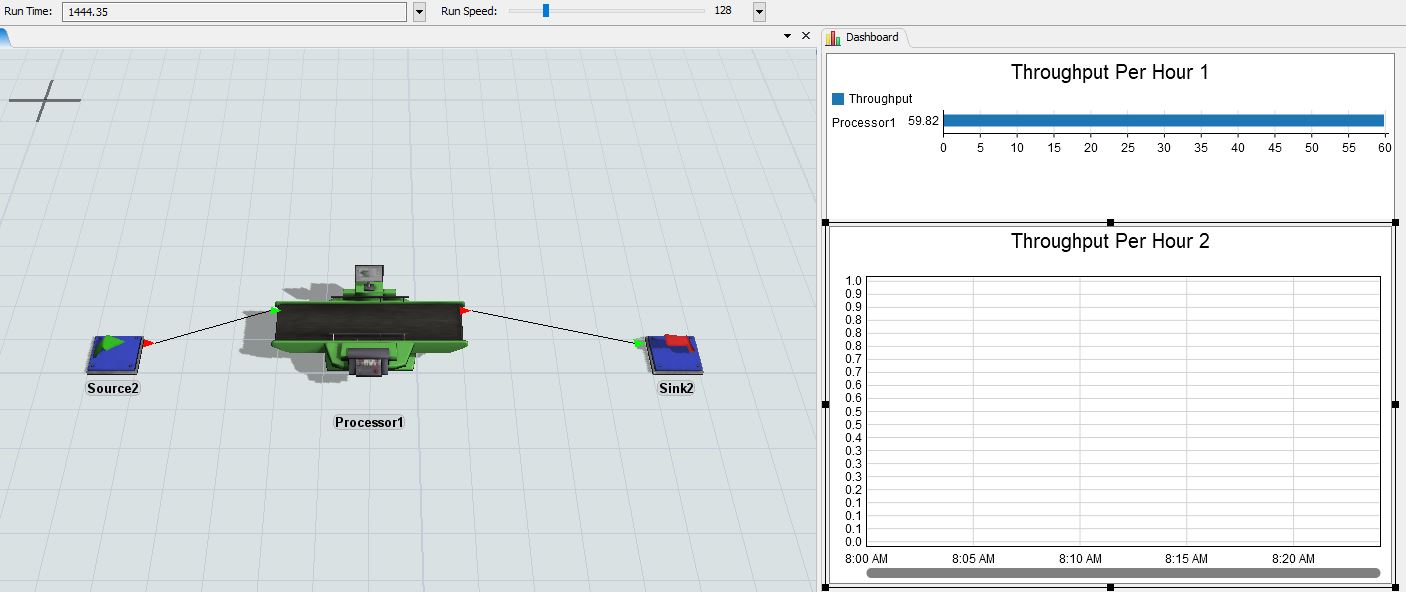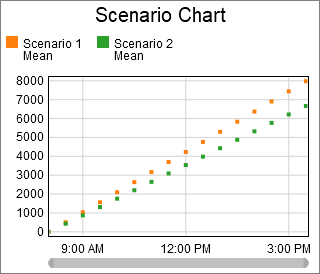Hi,
I tried to use composite throughput by time chart to track number of tasks passed through a group of processors every 30mins.
The top chart shows there are 300+ tasks passed through in last 30mins, and I observe the throughput is stable in last few 30mins interval. However the bottom composite throughput by time chart shows merely 90 tasks completed in first 30mins interval then drops to zero in later intervals.
What's wrong in the composite throughput by time chart?




